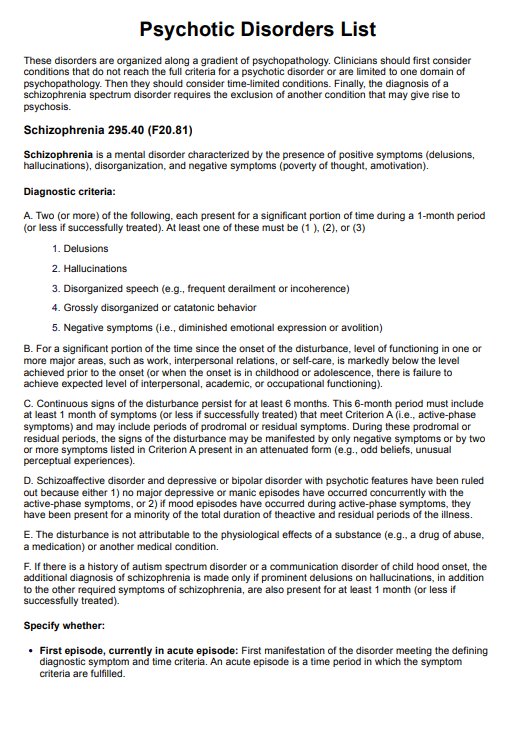Schizophrenia is a type of psychotic disorder, but not all psychotic disorders are schizophrenia. Other types include schizoaffective disorder and brief psychotic disorder, which have many of the same symptoms as schizophrenia, typically differing in duration or intensity.

Psychotic Disorders List
Download our free Psychotic Disorders List as a helpful reference tool based on the diagnostic criteria outlined in the DSM-5.
Psychotic Disorders List Template
Commonly asked questions
The causes of psychosis are multifaceted and can include genetics, brain chemistry, substance use, and environmental stressors such as trauma.
There are a variety of cognitive and behavioral therapies as well as prescription medications that are used in psychosis treatment. Antipsychotic medications are a common frontline method to treat psychosis, and are often used alongside individual or group psychotherapy to help alleviate the distress and impairment associated with psychotic mental illness.
Receiving coordinated specialty care involving multiple therapeutic treatment approaches is associated with better outcomes for those who experience psychosis-related disorders.
EHR and practice management software
Get started for free
*No credit card required
Free
$0/usd
Unlimited clients
Telehealth
1GB of storage
Client portal text
Automated billing and online payments











